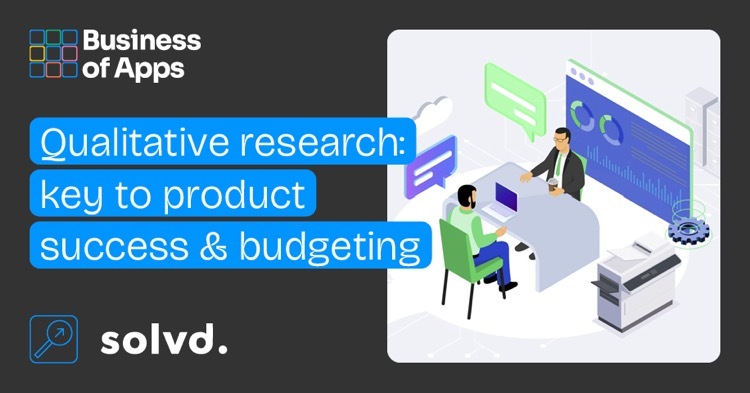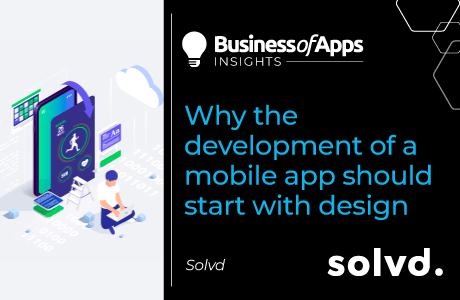Enterprise-level companies invest heavily into all stages of their product development, but something they often tend to overlook is research – simply because keeping a research team in-house is not always a viable option.
In 2010 Microsoft caused quite a ruckus in the media when pictures of their mock funeral of iPhone went viral after Windows Phone 7 release. These pictures didn’t age well: today, most people will probably hardly even remember ever owning or using a Windows 7 phone. At the same time, iPhone is still thriving. It is obvious, that Microsoft’s prognoses about Windows Phone 7 didn’t come true, but how did that happen, where did they miscalculate? Many marketing researchers suggest that the root cause was in the wrong perception of the customer base. But how is this perception formed? And, the even bigger question, how to create the one that is correct?
The short answer is to conduct quantitative and qualitative customer persona research and monitor it for trends, development and changes. This kind of research is usually delegated to experts for whom it’s primary occupation. Besides, a team of outside-of-company professionals can bring the objectivity that in-house experts may lack. In this article we will look into how qualitative research, when done right, becomes an essential instrument for optimizing the development budget and creating a successful product.
How qualitative research helps your product strategy
Yet, many companies forgo qualitative customer research. The reasoning behind this neglect is the following: qualitative customer research is often less scalable and doesn’t offer as much perceived objectivity as the quantitative does. Its data is less tangible and harder to assess. It also doesn’t always fit in the market’s demand for quick results. But more often, qualitative research is very specific and requires experts that most companies don’t have in-house. While quantitative research is much easier to comprehend and its results are quite transparent and draw a clear picture of what’s going on in numbers, qualitative research brings in invaluable insights about customer patterns and answers a lot of ‘why’ questions. For instance, questions like: Why do users abandon our checkout process halfway through?
Here are a few other key benefits that qualitative research offers.
Understanding of real customer pains and problems
It helps you offer solutions that respond to the market demand more precisely. One of the most common incorrect assumptions that product managers can make is to wrongly conclude that a certain feature will have a warm customer reception. Conducting qualitative customer research helps you to avoid such mistakes.
Clarity and transparency
In the initial idea generation phase of product development, qualitative research can give fuzzy new product concepts more clarity and make them more customer-oriented. It can also assist in spotting market gaps and trends, conceptualizing and filtering new product concepts. You also need to keep straight priorities focusing on jobs users are trying to do. This way, for instance, you can build an MVP faster and with a more precise response to user demand.
Multifaceted work with POVs
It’s common knowledge that relying only on your own point of view can be detrimental, especially when yours is the vocation subject to professional deformation. For example, being a developer, it’s hard to look at your project from a user point of view. Qualitative user research can help discover unanticipated insights that will be critical to a successful product launch or update.
Increased product adoption
A study by Bain & Company found that companies that incorporate qualitative research into their product development process see a 30% increase in product adoption..
Improved customer engagement and reputation
Engaging with customers through qualitative research creates a deep connection and a type of commitment that the feeling of being valued gives. A study by Edelman found that companies that prioritize customer experience see a 10% increase in brand value. This translates to the growth of customer loyalty and increases customer retention.
Key elements of a good qualitative consumer research
So, what constitutes a Qualitative Consumer Research and what features make it a good one? Ultimately, it tries to predict whether users will like your product, find it useful and want to stay loyal to it and recommend it to others. How do you gather such information? Usually, there are three most common ways to obtain it:
- In-depth interviews
- Focus Group research
- Observation
- Usability testing
Here are some best practices that you need to observe when conducting your qualitative research.
Clear goals and objectives
You need to have a well-defined understanding of why you are doing this research, what knowledge you hope to find and what data will mark its success. For example, your goal should not sound like ‘I want to have a series of interviews about the use of my application’, but rather ‘I want to understand which features my customers use more often and why and which features they find uncomfortable and why’.
Professional experts involved
On the one hand, in-house experts have the deepest level of knowledge about the inner workings of the product and the audience. On the other hand, qualitative research requires a measure of objectivity that at times is hard to achieve in-house. Qualitative research can be enhanced by outsourced professionals with an ‘outside’ view. For instance, a professional interviewer who can conduct an in-depth interview correctly, without unnecessary bias, facilitates the conversation without subjectively driving it. Combining in-house and outsourced efforts for qualitative research may be the best solution as this way you can be sure that the methods of research are selected correctly and that participants have proper incentive.
Well-planned process of working with collected data
When conducting research, you need to know very well what to do with the data you collected. It usually requires a seasoned professional to garner insights from this kind of data, to draw relevant cause-effect connections and to interpret the respondents’ answers, patterns and behaviors.
Clear understanding of follow ups and next steps
It would be a grave mistake to conduct qualitative research just for the sake of conducting it. Before you set out, you need to understand and formalize its further use. For example, create workflows for incorporating the results into product development, stakeholder presentations, product roadmaps.
Leverage AI tools
Using GenAI tools to systemize and analyze your data is a great way to make sure that your analysis is objective and you are not leaving any blank spots. AI tools can streamline data management tasks like cleaning, categorization, and coding, freeing researchers to delve deeper into analysis and extract richer insights. Additionally, AI’s ability to detect subtle patterns and predict future trends, based on past research and user behavior, empowers researchers to anticipate market shifts and develop products that align with evolving customer preferences
Incorporation of qualitative research at various stages of the product development process
Understanding the customer journey through qualitative research is foundational and helps you to apply a user-centric approach at all stages of your product development process.
Crafting User-Centric designs
The ideation phase benefits immensely from qualitative input. Workshops that involve end users in the design process can unearth needs that traditional research might miss.
Finalizing and Post-Launch: validating and adapting
Before a product’s final release, qualitative research provides a crucial validation step to ensure its market fit. Techniques like focus groups and in-depth interviews offer a final check against user expectations.
Integrating qualitative research in workflows and processes
Integrating qualitative research within an agile development framework enhances product relevance and user satisfaction. Cross-functional teams, including qualitative researchers, ensure that insights are integrated into every aspect of product development, from initial concept to final launch
Common mistakes and pitfalls to avoid during qualitative research
Qualitative customer research and analysis is a complex system that doesn’t provide a lot of tangible metrics and requires careful handling. If done wrong, it can lead to incorrect assumptions about your customers and their behavior and eventually play a part in your product’s failure, like in the case with Windows Phone 7. Below are some of the mistakes you should look out for when conducting qualitative research.
Interviewer and respondent bias
It is important to understand that when analyzing your product’s receptions, it’s vital not to pick out just those who like it but to create a complete and realistic reception picture. Your interviewer should be unbiased and your respondents should feel free to express their honest opinion. For these reasons, such research is outsourced and the respondents are often guaranteed anonymity.
Focusing on positive only
Neutrality of a qualitative research means also that it shouldn’t focus only on the advantages of your product, but should encompass everything, including drawbacks, underlooked and overhyped features.
Lack of interpretation skills
The ability to take a user’s often opinionated take or a behavioral pattern and glean facts from it, make assumptions and draw proper conclusions is a vital skill.
Unsuitable respondent pool
If you really want to understand your target audience, it is absolutely essential to carry out qualitative customer research among the people who truly represent it. Consider your respondents’ location, backgrounds, skillsets and lifestyles carefully and draw a detailed user persona.
Absence of follow-ups
The next steps need to be made clear to both the team who conducts it, the people who make decisions in your project, and the respondents. It will provide the respondents with additional motivation. It will help you to avoid dealing with the frustration and burnout of the researchers. Last but not least, it will provide the justification of the research costs for the stakeholders.
Case study
So, why was it that the memetic iPhone funeral didn’t go well and the Windows Phone system is today a thing of the past?
All experts admit that it had a unique interface and innovative features, it was well crafted and easy to use, and yet, users never took to it. Some things may have been overlooked in the qualitative consumer research or may have been discarded as unimportant, wrong assumptions were made. For instance, the loyalty of Android and iPhone user bases was underestimated. When used to a familiar device, people seldom tend to switch to a completely different one, they prefer to upgrade, even though it may be more expensive and less feature-rich. Metro UI (the new Interface Design system Microsoft used for Windows Phone 7) was independently praised for its design, fluidity and ergonomics. Yet the resilience of users who preferred to stick with the familiar, where interactions with the phone were brought to the state of muscle memory and complete automatism, largely outweighed the Metro UI advantages.
Another reason, and one that experts agree have contributed the most to Windows Phone 7 demise, was the limited app ecosystem. It turned out, it was extremely important for users to have a wide variety of apps available or to have familiar and favorite apps available to them.
Microsoft, known for its strong presence in enterprise software, also made a wrong assumption about potential Windows Phone 7 users, which led to the entire marketing campaign and development focus on the corporate market instead of consumer users. At the time of the Windows Phone 7 development, the line between personal and business use of smartphones was blurring. Business users increasingly preferred using their personal devices for work purposes, a trend known as Bring Your Own Device (BYOD), a reason behind the major shift in business user behavior. It appeared to be overlooked by Microsoft, which led to their major misconception of their target audience.
Conclusion
Qualitative customer research is an integral part of a customer-oriented product development. Combined with quantitative research it helps you to create a most complete analysis of your target audience, understand their pains, needs, behaviors, make educated predictions about your product reception, offer tailored solutions for these needs and pains, and avoid developing something your users will not need or understand.
Conducting qualitative customer research can be tricky and is better delegated to experienced professionals that are often outsourced due to its narrow specifics. Following the best practices described in this article will help you to turn your qualitative customer research into an excellent product investment and enhance your product and customer analytics.











